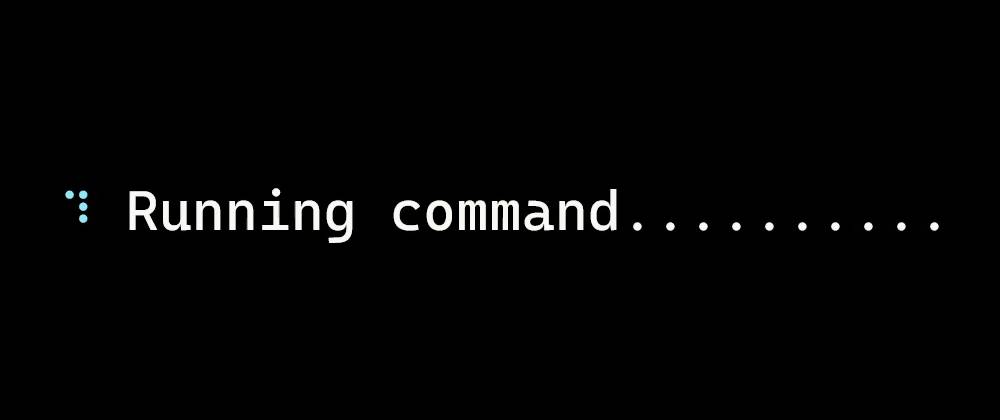Adding a Loading Animation to JHipster Lite CLI

Have you ever run a command-line application and found yourself staring at a blank screen, wondering if it’s still working or if it’s frozen? That’s exactly the problem I set out to solve for the JHipster Lite CLI project. In this post, I’ll share how I implemented a loading animation to enhance the user experience while commands are executing.
The Problem: Waiting in the Dark
When running commands in the JHipster Lite CLI, users had no visual feedback during operations that took more than a few seconds. This led to uncertainty - is the application still running? Is it stuck? Should I cancel and try again?
I wanted to fix this issue by adding a loading animation that would provide visual feedback during command execution.

The Solution: A Hexagonal ProgressStatus
I created a loading animation module that follows the hexagonal architecture principles that JHipster Lite is known for. Here’s a demo of what I implemented:

Exploring Available Libraries
Before implementing my own solution, I explored existing libraries:
-
magic-progress: I tried using this library but encountered errors when running the
jhlitecommand. Looking at the source code, I found no tests, and the project hadn’t been maintained since August 2020. -
progressbar: This library didn’t have spinner animations, which was a key requirement for our user experience.
Given these limitations, I decided to implement a custom solution that would perfectly fit our needs.
The ProgressStatus Module
I created a ProgressStatus module following hexagonal architecture principles:
Hexagonal Architecture Implementation
├── domain
│ └── ProgressStatus.java
├── infrastructure
│ └── primary
│ └── SpinnerProgressStatus.java
└── package-info.java
The code follows a clean hexagonal architecture pattern:
- Domain Layer (Port) - The
ProgressStatusinterface defines the core contractProgressStatus.java - (click to expand)
- Infrastructure Layer (Adapter) - The
SpinnerProgressStatusclass implements the interface for spinner animationSpinnerProgressStatus.java - (click to expand)
This separation allows us to:
- Keep the core logic independent of visual animation implementation
- Easily test with mock implementations
- Add new progress indicator types without changing core logic
Key Features
1. Animated Unicode Spinner
The spinner uses Unicode braille patterns for a smooth rotating animation:
private static final String[] SPINNER_FRAMES = { "⠋", "⠙", "⠹", "⠸", "⠼", "⠴", "⠦", "⠧", "⠇", "⠏" };
2. Color-Coded Messages
The animation implements ANSI color support:
- Cyan for in-progress operations
- Green for success messages
- Red for failure notifications
3. Asynchronous Animation
The spinner runs in a daemon thread to avoid blocking the main application:
executor = Executors.newSingleThreadScheduledExecutor(r -> {
Thread thread = new Thread(r, "spinner-animation");
thread.setDaemon(true);
return thread;
});
executor.scheduleAtFixedRate(this::renderFrame, 0, 120, TimeUnit.MILLISECONDS);
4. Thread-Safe Operation
The implementation uses atomic operations for thread safety:
private final AtomicBoolean running = new AtomicBoolean(false);
5. Rich Animation Sequences
I added sophisticated animation cycles including:
- Progressive dots (. .. …)
- JHipster-lite symbols (⧓⚡)
- Hexagonal architecture symbol (💎)
- Spring Boot symbol (🍃)
6. Rendering Animation Logic
private void renderSpinner(boolean updateFrame) {
if (running.get()) {
if (updateFrame) {
frameIndex = (frameIndex + 1) % SPINNER_FRAMES.length;
suffixFrameIndex = (suffixFrameIndex + 1) % SUFFIX_ANIMATION_FRAMES.length;
}
String frame = SPINNER_FRAMES[frameIndex];
String suffix = SUFFIX_ANIMATION_FRAMES[suffixFrameIndex];
System.out.print(CLEAR_LINE + ANSI_CYAN + frame + ANSI_RESET + " " + currentMessage + suffix);
}
}
The Little Details That Matter
A cool thing about this animation is that you don’t mind if operations take a little longer because you can see different animations and progress indicators. I included some curious details:
1) The icons on the right represent the technology and architecture used by JHLiteCli. I synchronized the animation so it feels like you can see what is loading, but it’s just an illusion.
2) If the Execute command takes a little bit longer, it shows the bow tie + lightning, which represents jhipster-lite. I designed the animation to match that style.
At the end, I felt the loading time isn’t as bothersome as before. The user experience is much more relaxed and engaging.
Usage Example
Here’s a test case on how ProgressStatus works:
@Test
void shouldShowSuccessMessage(CapturedOutput output) {
ProgressStatus progressStatus = new SpinnerProgressStatus();
progressStatus.show("Operation in progress");
progressStatus.success("Completed successfully");
assertThat(output.toString()).contains("✓").contains("Completed successfully");
}
ProgressStatusTest.java - (click to expand)
Benefits Beyond Aesthetics
This implementation provides several benefits:
- Improved User Experience: Users now have visual feedback during operations
- Reduced Perceived Wait Time: The animation makes waiting feel shorter
- Clear Operation Status: Success and failure states are clearly indicated
- Architectural Consistency: The solution follows JHipster’s hexagonal architecture principles
What’s next?
I am going to share how I integrated the ProgressStatus module into the JHipster Lite CLI for:
- Application Startup: Shows “Loading JHipster Lite CLI” during initialization
- Command Execution: Displays progress during command running
- Command Completion: Shows success or failure messages with appropriate colors
The animation is going to be active for all major commands:
- Version command (–version)
- List command (list)
- Apply command (apply)
Conclusion
Adding a loading animation to the JHipster Lite CLI might seem like a small enhancement, but it significantly improves the user experience. By following hexagonal architecture principles, I was able to create a solution that’s not only visually appealing but also maintainable, testable, and extensible.
This project demonstrates how proper architectural design can benefit even UI components. The next time you’re working on a command-line application, consider how you might enhance the user experience with similar feedback mechanisms.
Lastly, let me extend an invitation to join me on my journey 🚀 in the realm of software development. I share my insights, experiences, and valuable resources on LinkedIn 📎. Following me on these platforms not only keeps you updated on my latest posts and projects 📬 but also opens doors to vibrant discussions and learning opportunities. I look forward to connecting with you! 💼
Feedback
If you like those projects, please, considering give it a star 🌟 to support us and enhanced both repository’s visibility 🤩!